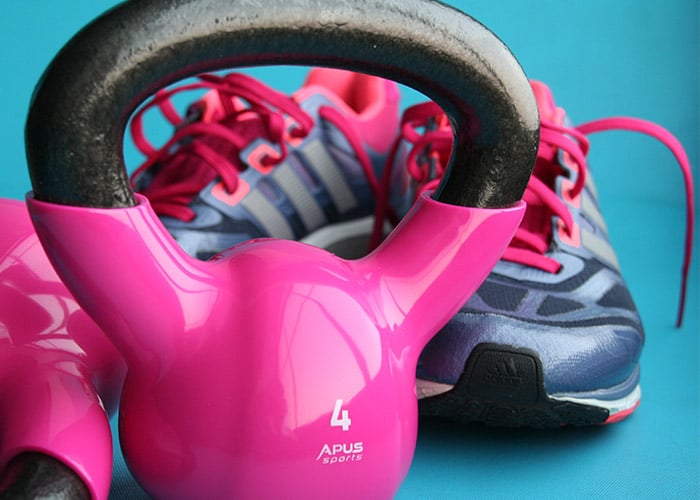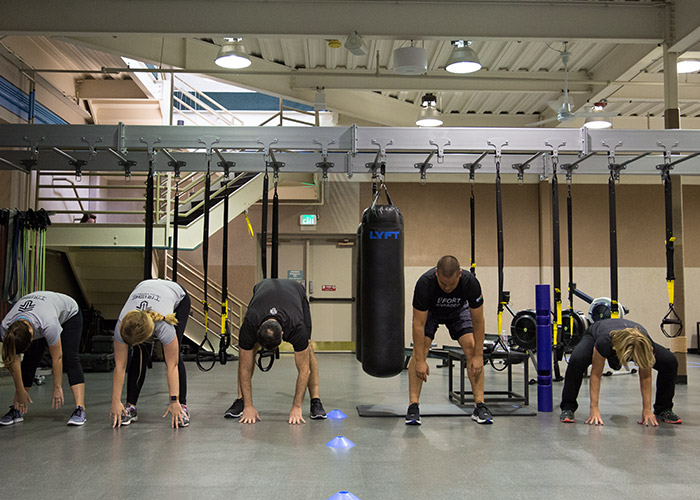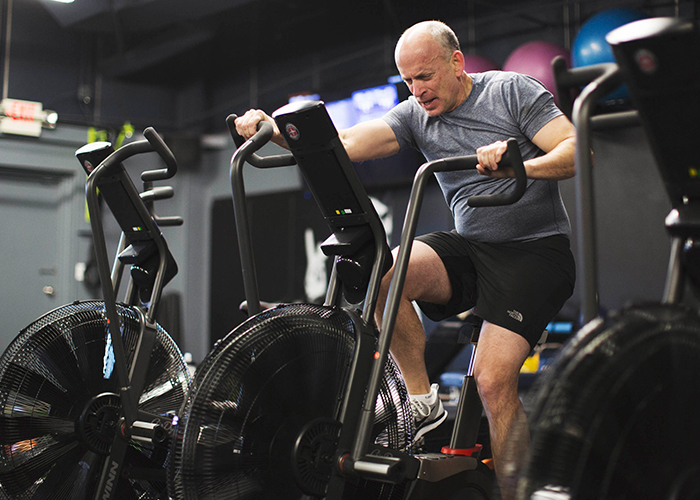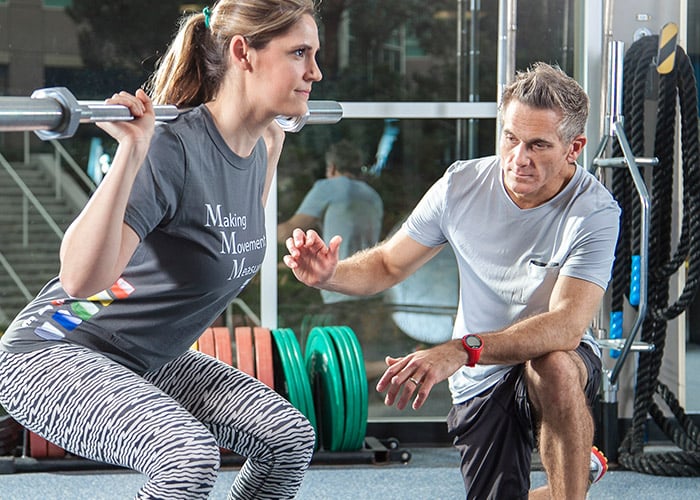Design a Balanced Workout Routine Using the Myzone System
When you hear the term balanced workout routine, what comes to mind?
You're probably familiar with the term “balanced diet” when it comes to nutrition, which refers to eating a variety of healthy foods throughout the day and week.
A balanced workout routine is similar. You want to participate in a variety of activities and intensities throughout the week and month to offer your body and mind the optimal ability to adapt and improve.
So what does a balanced workout routine look like? We recommend a variety of cardiorespiratory, muscular fitness (resistance training), and flexibility activities throughout your week. We also suggest varying the intensity of your workouts to offer both the appropriate challenge and the appropriate rest and recovery to stimulate adaptation and improvement. We make more specific suggestions below.
MYZONE's heart rate tracking and Activity Calendar features can help you track not only the intensity of your workouts but also the type and even how you felt about your workouts.
A Balanced Workout Routine
According to the World Health Organization guidelines, healthy adults should aim to get three to five days of cardiorespiratory exercise per week for a duration of 30 minutes or more. In addition, folks should aim for two to three days of resistance training and flexibility work for each major muscle group.
Whether you decide to perform cardio and resistance training on the same day or separate days is entirely up to you. If you do choose concurrent training (both cardio and resistance training on the same day), we recommend that you start with your priority modality first. For example, if your top fitness goals involve cardio training, then do your cardio first. If your top fitness goals involve resistance training, then do that first. We shared our recommendations and research findings in a previous blog post titled, “Which Comes First – Cardio or Weights?”
It is recommended that you offer your muscles at least 24 to 48 hours in between resistance training sessions, so plan accordingly.
In addition to a variety of cardio, resistance, and flexibility training activities, we also recommend that you vary the intensity of your workouts. Insert active recovery and/or rest days in between your higher intensity days. When you look back at your MYZONE Activity Calendar, you should see a variety of tile colors (gray, blue, green, and yellow) throughout the weeks and months.
Cardio, Resistance Training, Flexibility, and Recovery Recommendations
Start to monitor your workout patterns and determine the ideal number of high-intensity days versus active recovery or rest days that is right for you. Based on your results from heart rate tracking you can see what ratio or rhythm allows you to feel fresh going into your next workout.
Below are some general guidelines for varying the intensity of your cardio, resistance training, flexibility, and recovery.
Cardio
High-intensity days should produce a YELLOW or GREEN tile (average intensity for that workout as seen on the activity calendar). We recommend no more than two to three of these per week.
Moderate intensity days should produce a GREEN or BLUE tile. We recommend two to five of these per week (depending on your goals).
Active recovery days should produce a BLUE or GRAY tile. We recommend inserting these days in between your high-intensity cardio or resistance training days.
Resistance Training
Since resistance training intensity is best measured by load (weight) and velocity (repetition speed), we recommend that you keep tabs on those metrics to determine appropriate rest/recovery days in between. You can use heart rate tracking as an additional metric to monitor the average cardiorespiratory intensity of your resistance training session. In general, circuit training or endurance training will elicit more of a cardiorespiratory response than hypertrophy, power, or strength training.
Circuit training or muscular endurance training days may produce a GREEN tile (average cardio intensity for the workout). We recommend this type of training two to three days per week with a rest day or active recovery day in between.
Hypertrophy, strength, and power training days may produce a BLUE or GRAY tile (average cardio intensity). Although the cardio intensity may only be low to moderate due to the extended rest period between sets, the overall intensity of these types of resistance training is considered high intensity because of the demand on your muscles and nervous system. We recommend these types of training two to three times per week if you are trying to increase your muscular strength, power, or size. Include a rest day or active recovery day in between.
Flexibility
You can include flexibility training at the end of your workout or as a stand-alone session. If you are performing flexibility training at the end of your workout, be aware that the average intensity of your session will decrease since flexibility work is low demand on your cardiorespiratory system (heart rate). If you are performing flexibility training as a stand-alone session, you will want to complete a warm up first so that your body and muscles are warm going into the stretches.
Flexibility sessions will likely produce a GRAY tile. Depending on the organization of your workout routine, one or two stand-alone flexibility sessions may be appropriate per week.
Recovery
There are many ways that you can approach your recovery. You can take complete rest in between high-intensity days, or you can plan active recovery days. Active recovery can consist of cross-training (performing a modality unique from what you typically train), Yoga/Pilates, light cardio, or flexibility training. Aim for an average intensity to produce a GRAY or BLUE tile.
One or two rest days or active recovery sessions per week are appropriate based on the intensity of your other training days. To get an idea of your workout intensity, you can use the MYZONE system as a heart rate tracking tool to see how often your heart rate stays stable or fluctuates, and track it in your Activity Calendar.

Let's Recap
A balanced workout routine consists of a variety of cardiorespiratory, resistance, and flexibility training activities and intensities each week and month.
Aim for three to five days of cardiorespiratory training per week, and two to three days of resistance and flexibility training per week.
Aim for two to three YELLOW tiles, two to three GREEN/BLUE tiles, and one or two GRAY/BLUE tiles per week.
Monitor the rhythms of your training and determine what works best for you and your body! You are in this for the long haul, so establish a pattern that promotes sustained progression and enjoyment.
Remember to use the hashtags #effortrewarded and #myzonemoves when you post your workout pics, and don’t forget to add your workout pics with your moves in your Activity Calendar!
For more tips on how to use the MYZONE heart rate tracking monitor and App, follow us during Fitness Fridays on Facebook Live (subscribe on MYZONE’s Facebook Page) – 8 am PT, 11 am ET, and check out our MYZONE Moves Podcast on iTunes or Google Play.
Keep moving forward!
Share this
You May Also Like
These Related Stories

How to Use the Myzone System for Weight Loss

Myzone: How Exercise Makes Your Heart Healthy









